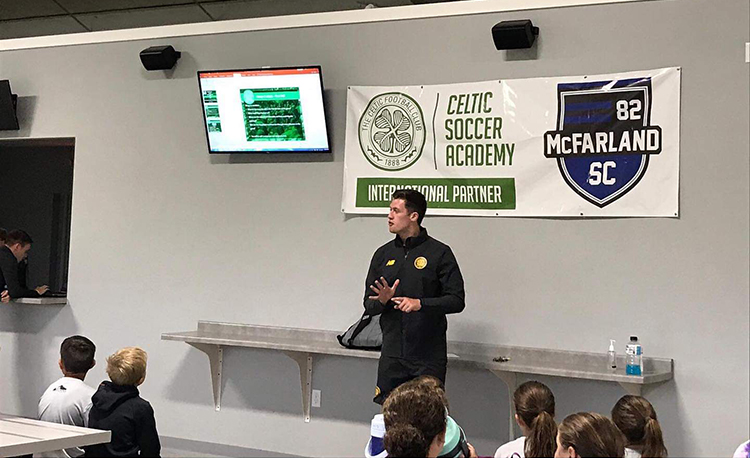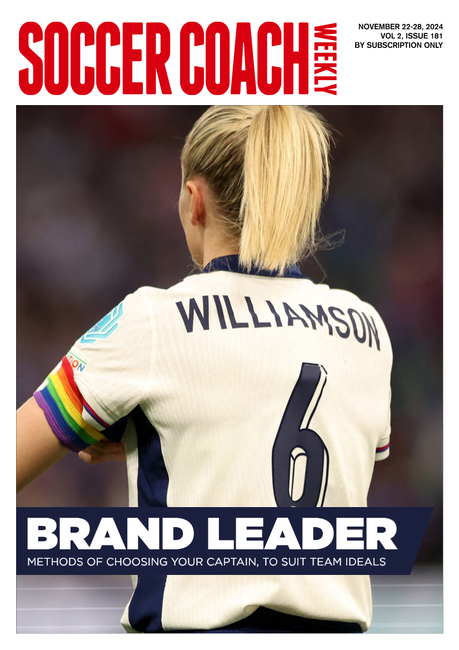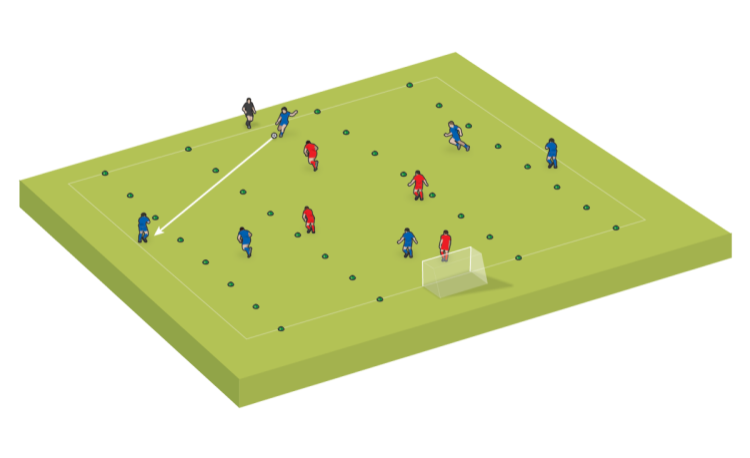Adding analytical strings to your bow
Uefa B coach and former East Fife FC scout CHRIS McLAUGHLIN tells STEPH FAIRBAIRN how social media helped him develop new tactical analysis skills
Chris McLaughlin is a teacher, Uefa B license coach, and increasingly, a football analyst.
With a variety of coaching experience - including work as an academy coach, club development officer and women’s assistant manager - and time spent at the Scottish FA and Celtic, Chris set about integrating analysis into his skillset to improve his tactical understanding.
A role as first-team scout and opposition analyst at East Fife FC allowed Chris to put his analysis skills into practice.
Now living and working in Malaysia, he continues to share his thoughts and ideas about games on social media.
SCW caught up with Chris to talk about what he enjoys about analysis, how it helps his coaching, and how other coaches can get started…
SCW: What is it about analysis that interests you so much? How does it link with your coaching?
CM: “Reflecting on my own ability, tactical analysis was something I knew I had to improve at. I made the decision to start doing some bits and pieces on Twitter and LinkedIn, and trying to get some feedback.
“Through that, it’s been great to speak to some really clever people, who have much more experience than me.
“Getting that overall bird’s eye view of a game can help you as a coach, because if you know the way you want your own team to play, or how you imagine an opposition might play in an upcoming game, you can use that overarching picture, and then drill down into the specifics.
"I think having a clear understanding of what might happen - where we can hurt teams and where they might hurt us - just helps you to be more prepared and helps you give clarity of information to the players.
"You see more analysts on the bench, rather than in the stands - sort of hybrid roles of coach-analyst. Both Swansea City and Accrington Stanley had a coach-analyst vacancy in each of their academies recently.
“I think if you can do both, it’s a really useful skillset to have. You can be really specific, really clear."
If you’ve got more than one string to your bow, that’s only going to stand you in good stead, and most importantly, stand your players in good stead as well."
"My job was to gather as much information as possible and put it together for the staff..."
SCW: When you are analysing a game, do you go in with an idea of what you want to look at? Or do you see how the game develops and decide from there?
CM: "I think it would depend on the purpose of the analysis. Lots of stuff I’ve put on Twitter are things I have seen and thought ’that’s interesting, I’m going to watch that again and pick it apart’. Or it might be that a team plays out from the back in a really interesting way, so I’m going to look at that.
“At [Scottish then-third tier club] East Fife, when I was an opposition analyst, it was much more structured in terms of how the opposition try to play, their main ideas, their strengths and weaknesses, key players, and, importantly, how we can hurt them.
"My job was to gather as much information as possible and put that together in a really concise, clear, but detailed way for the staff. They would then make decisions on how to trim that down for the players.
"So if I’m creating a 60, 70 page report, with images and video and numbers, the players wouldn’t get all of that. It’s just to give the management staff that background. Then, based on their knowledge of our team and the opposition, they would trim that as they thought appropriate.

“It was watching many games many times. What’s the system? How do they move when they’ve got possession? How do they look to attack? How do they look to defend? And I think how we can take advantage is the really important bit.
“It’s one thing to say Manchester City invert the full-backs and have five in the attacking line. Okay, but what are we going to do to stop them? Or what are we going to do to hurt them? That’s the key piece, certainly when you’re coaching.
"It’s one thing to say, ’here’s what’s happening’. It’s another thing to say, ’and here’s what we’re going to do about it’.
SCW: Often when we watch games, they’re high-level games. We can analyse plays, but how do we make sure we’re taking those learnings and adapting them so they are right for the players we’re working with?
CM: "As you introduce players to analysis, there are two things I would encourage.
"Firstly, can we look for role models? It might be a story of perseverance - I’m thinking of [Liverpool and Scotland full-back] Andy Robertson, who was released by Celtic and worked his way through the leagues. We had a lot of that for the Scottish women’s national team’s girls academy.
“Secondly, look in terms of how they’re playing. Look at the way they’re scanning, or look at how they receive the ball on the back foot, or pressing and trying to win the ball back and working hard for their team.
“We can take clips from that elite context, but what are the lessons we’re taking? Is it realistic? Because if our players at 8, 9, 10 [years of age] are not falling in love with the game, or can’t manipulate the ball when they get it, there’s not so much point in teaching them about those 11v11 pressing structures, when it’s not what they need at that time.
"It’s nice to teach about those things. Sometimes as a coach, you feel ’I’m more of a proper coach now, because I’m coaching at this level, and talking about these things’. But a proper coach is someone who delivers what the players need in that engaging, appropriate way.”
SCW: For any coaches who want to get into analysis, what tips have you got for them about how they might start?
CM: "Getting started is one of the key things, just give it a go. When I look back at some of my stuff from two and a half years ago, it was pretty rotten. But it’s a starting point. If you don’t start, you’re not going to improve.
"Watching as much football as possible is a big help, at a range of different levels.
"Get a really good angle. TV footage isn’t geared up for you to see the whole game..."
"I would start small. You might start working backwards: ’I’ve heard Manchester City play in this way, so I’m going to watch and see if I can spot that’.
"Or it might be a team you don’t know and say: ’I wonder if I can work out within the first 10 to 20 minutes what system they are playing? Are they building that with a three or four? Is it a single pivot, one sitting midfielder? Is it a double pivot? What’s the role of the wingers in the build up?
“Then ask for feedback. You’ve got to be open to learn. And to learn, you’ve got to be open to criticism and feedback.
"As much as it’s nice when people say, ’This was really good,’ it’s very rare that anybody is the finished article. So you’ve got to be willing to get feedback and get a bit of criticism.
“The other big thing I would say is to try and find footage with a really good angle. Lots of TV footage is not geared up for you to see the whole game. It’s for you to see the action.
"I know that Carlon Carpenter on Twitter - and I’m sure there are others - has his own Google Drive file. He’s got lots of tactical camera footage so you can dip in and out of that and see the bigger picture, see how the teams and players are moving and see what’s happening across the whole pitch, which is a big help as well."
Related Files
Newsletter Sign Up
Coaches Testimonials

Gerald Kearney, Downtown Las Vegas Soccer Club

Paul Butler, Florida, USA

Rick Shields, Springboro, USA

Tony Green, Pierrefonds Titans, Quebec, Canada
Subscribe Today
Discover the simple way to become a more effective, more successful soccer coach
In a recent survey 89% of subscribers said Soccer Coach Weekly makes them more confident, 91% said Soccer Coach Weekly makes them a more effective coach and 93% said Soccer Coach Weekly makes them more inspired.
*includes 3 coaching manuals
Get Weekly Inspiration
All the latest techniques and approaches
Soccer Coach Weekly offers proven and easy to use soccer drills, coaching sessions, practice plans, small-sided games, warm-ups, training tips and advice.
We've been at the cutting edge of soccer coaching since we launched in 2007, creating resources for the grassroots youth coach, following best practice from around the world and insights from the professional game.








